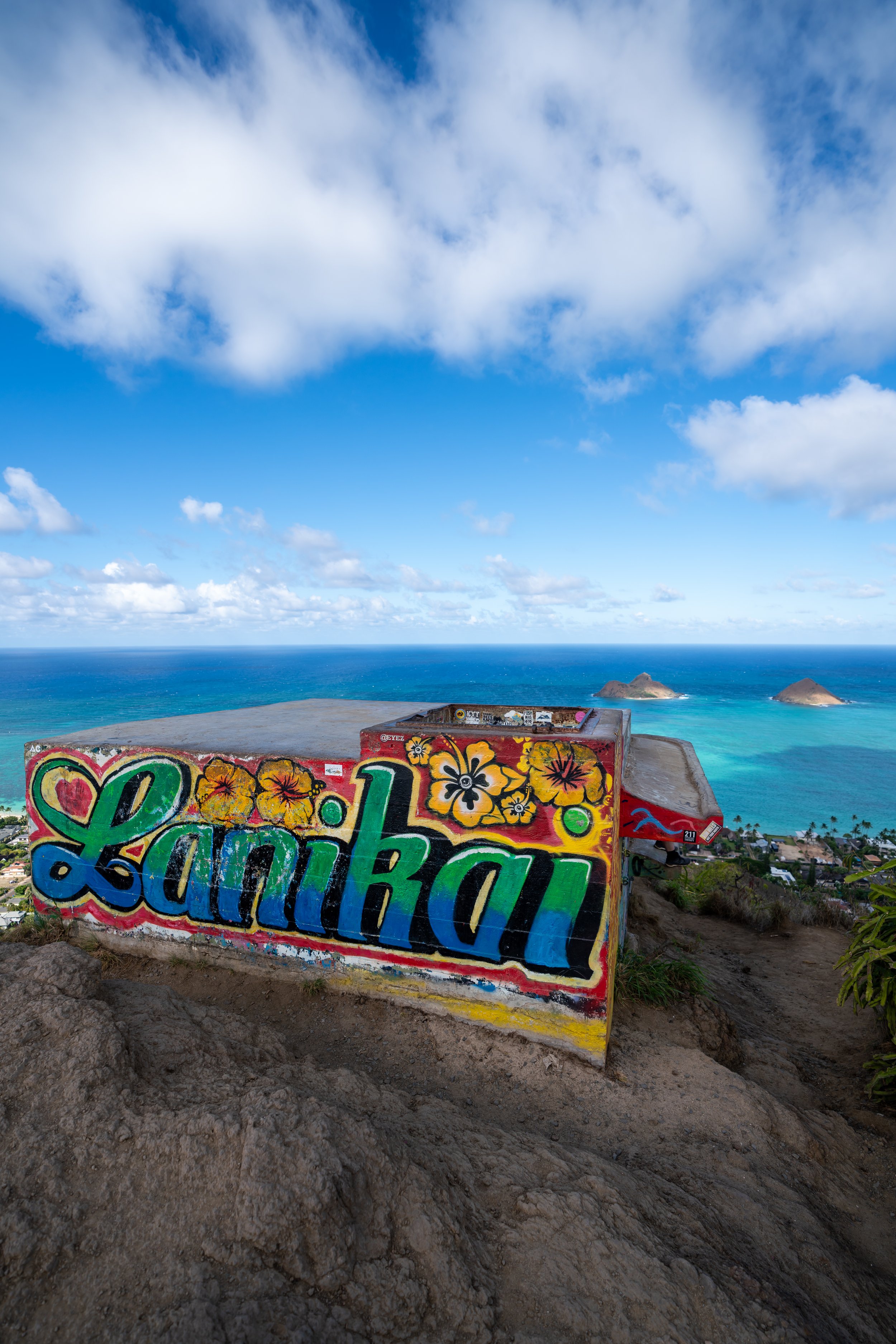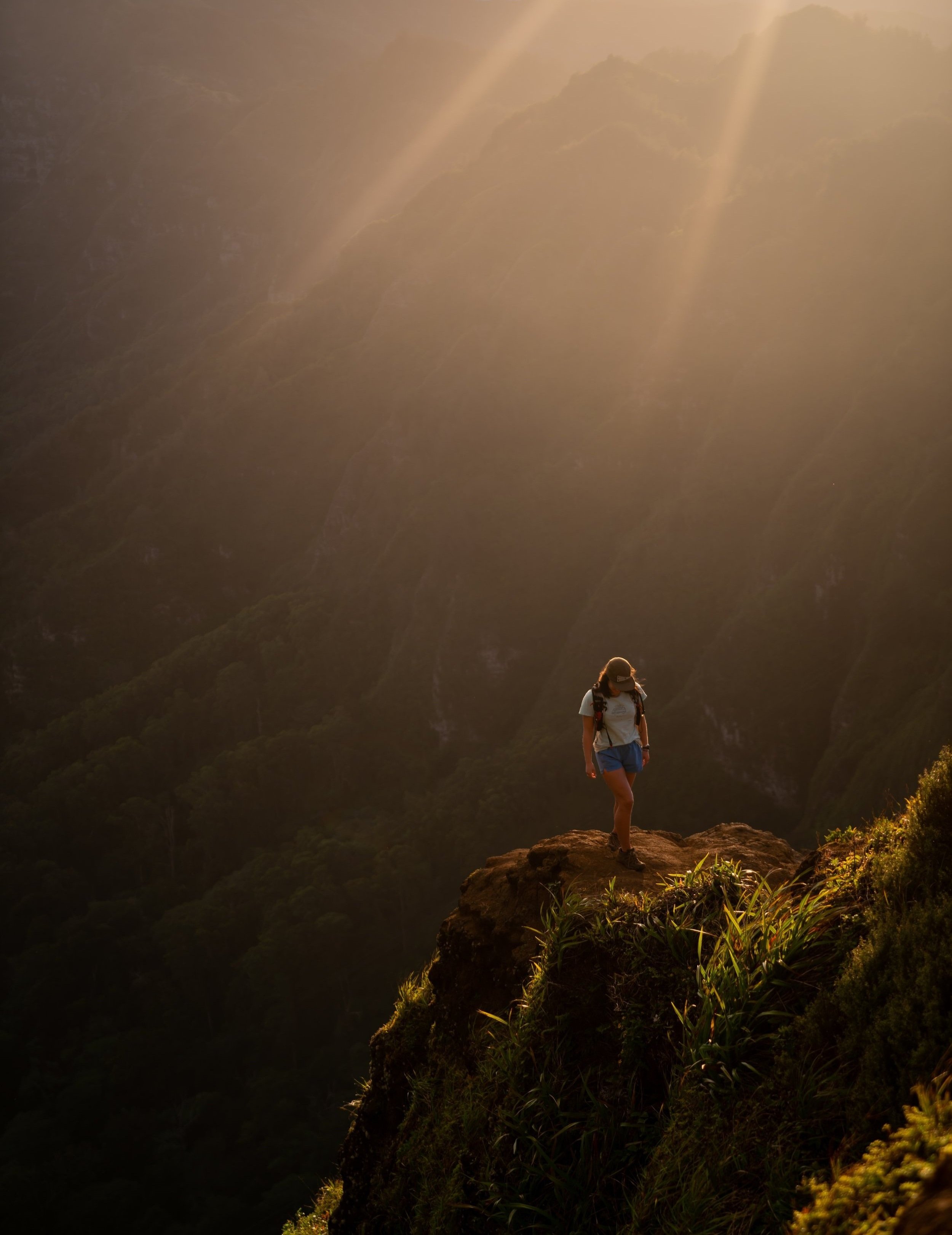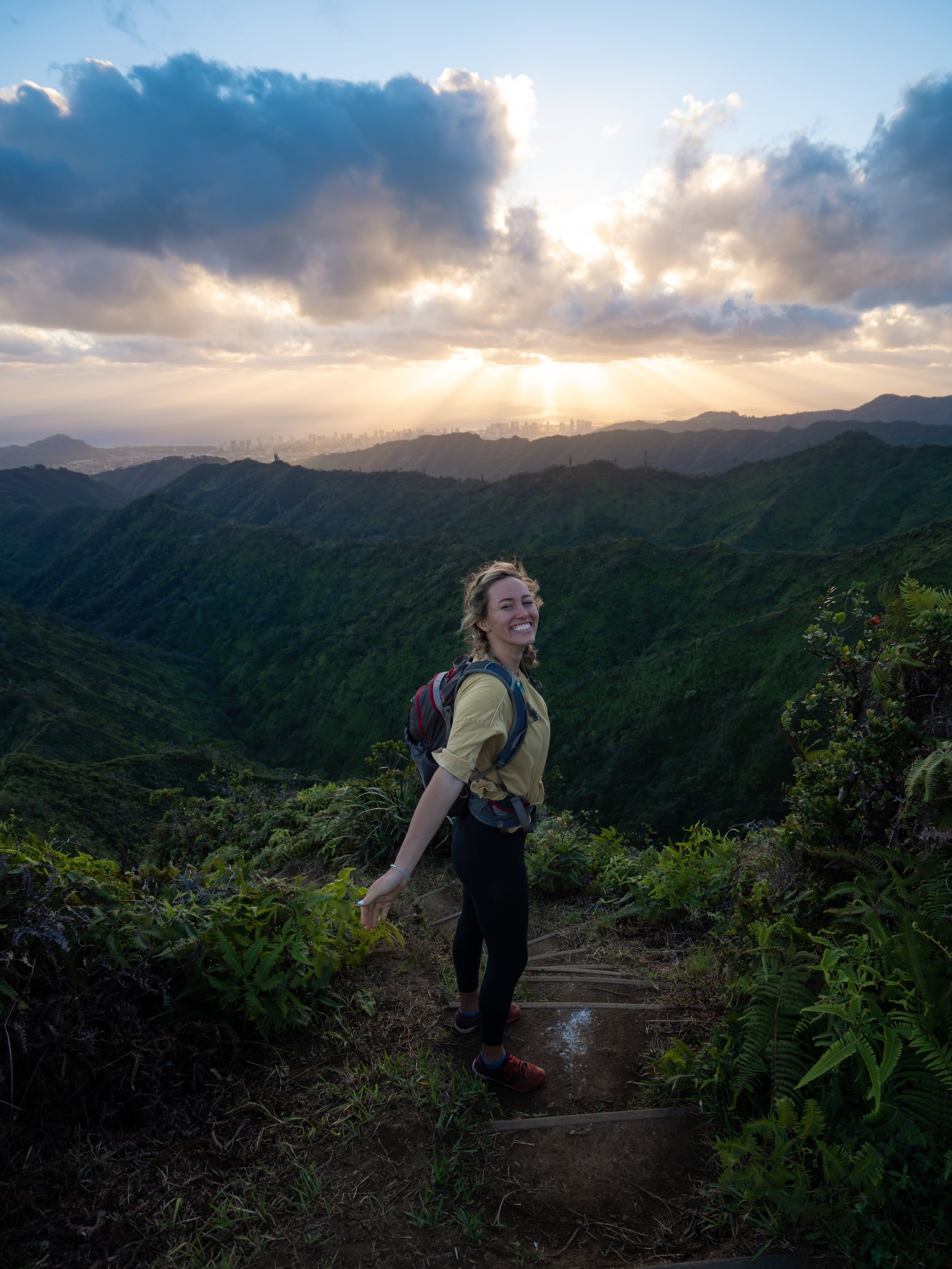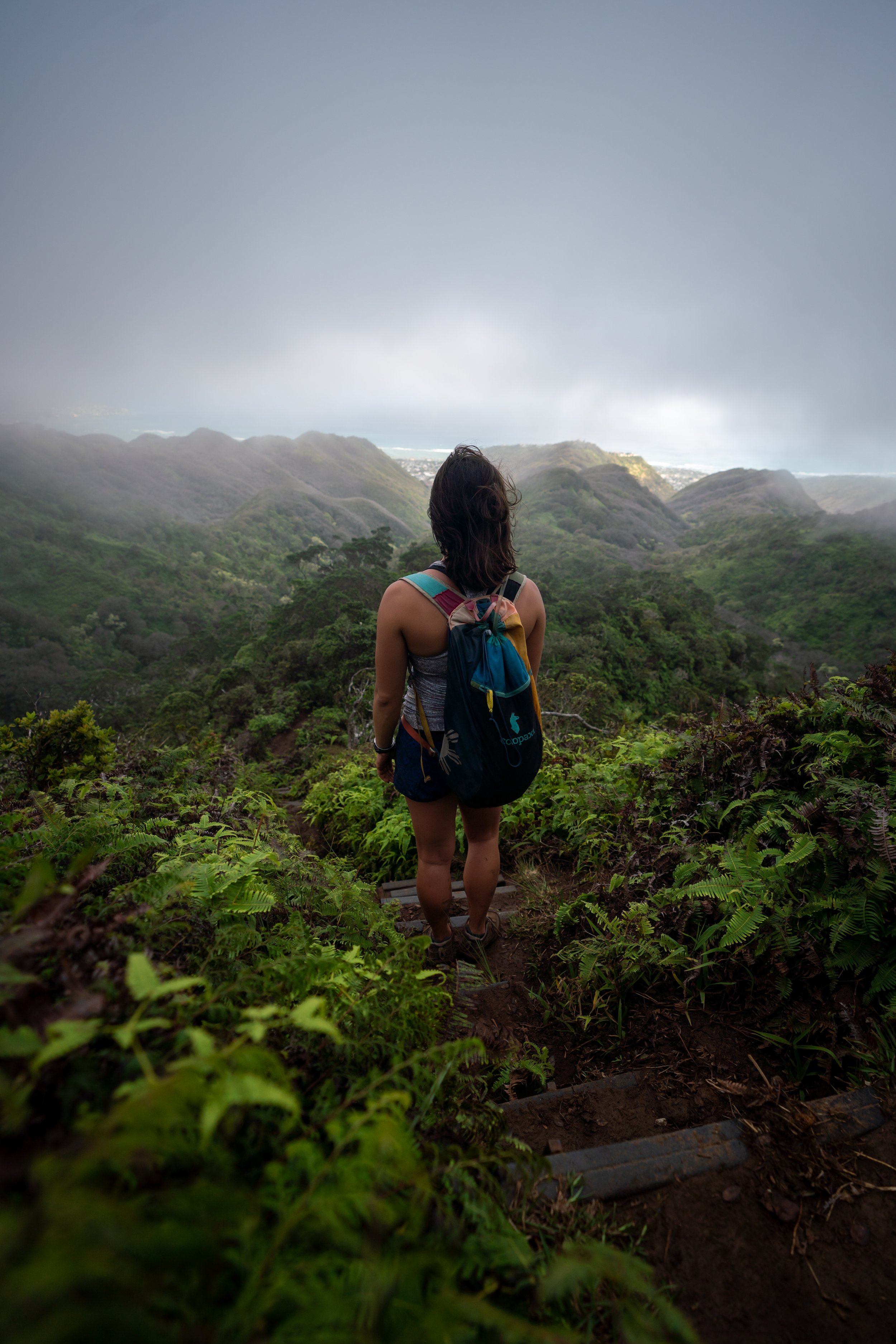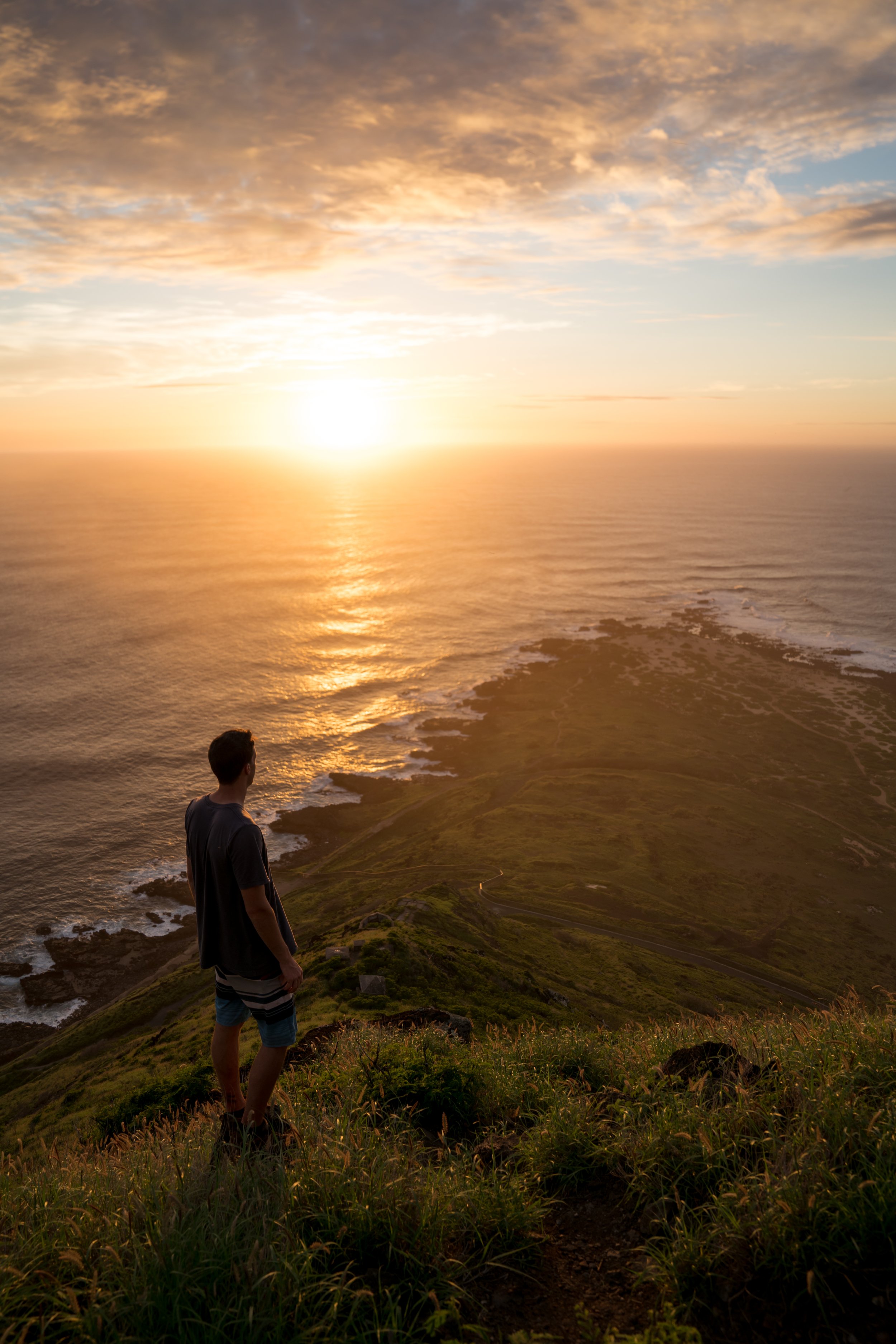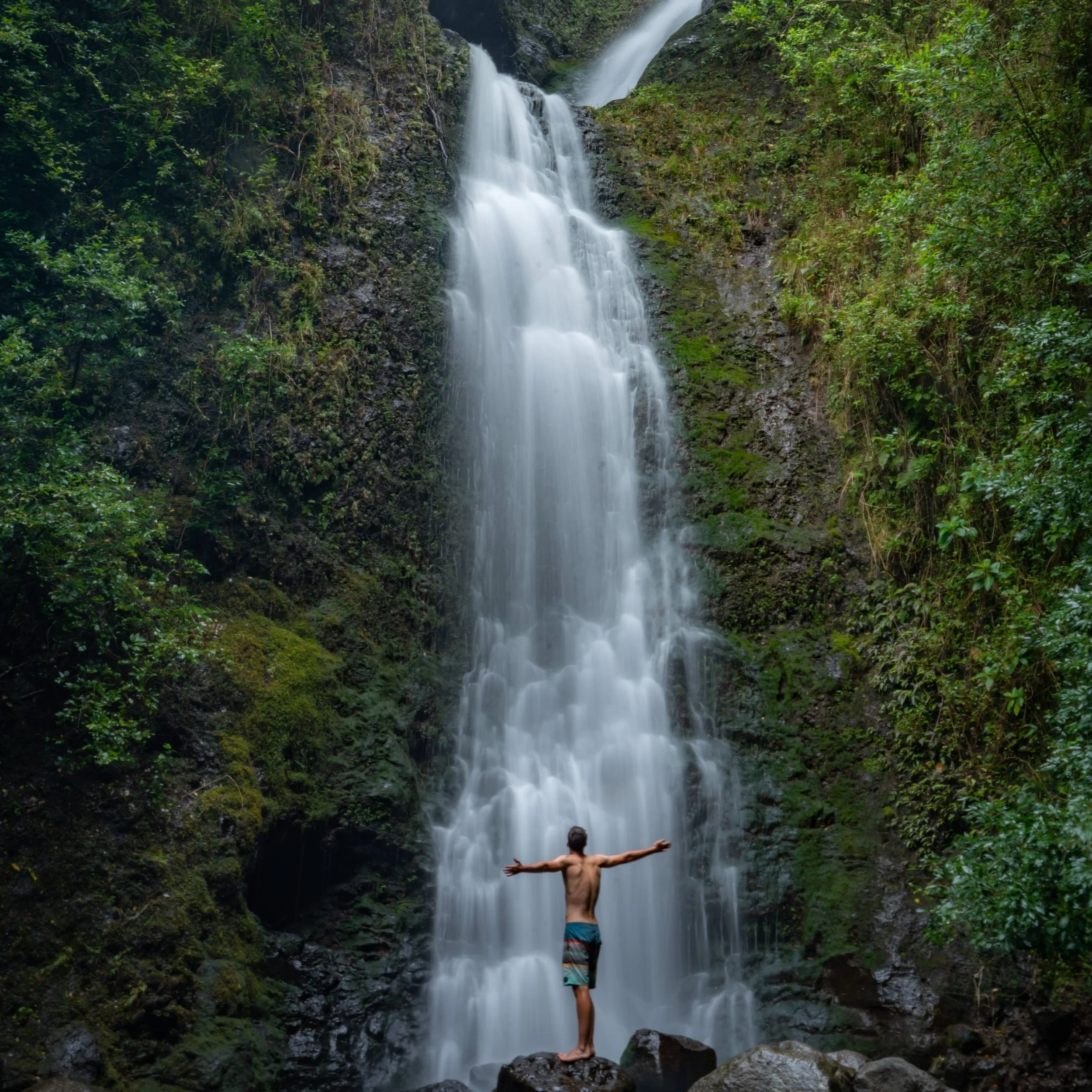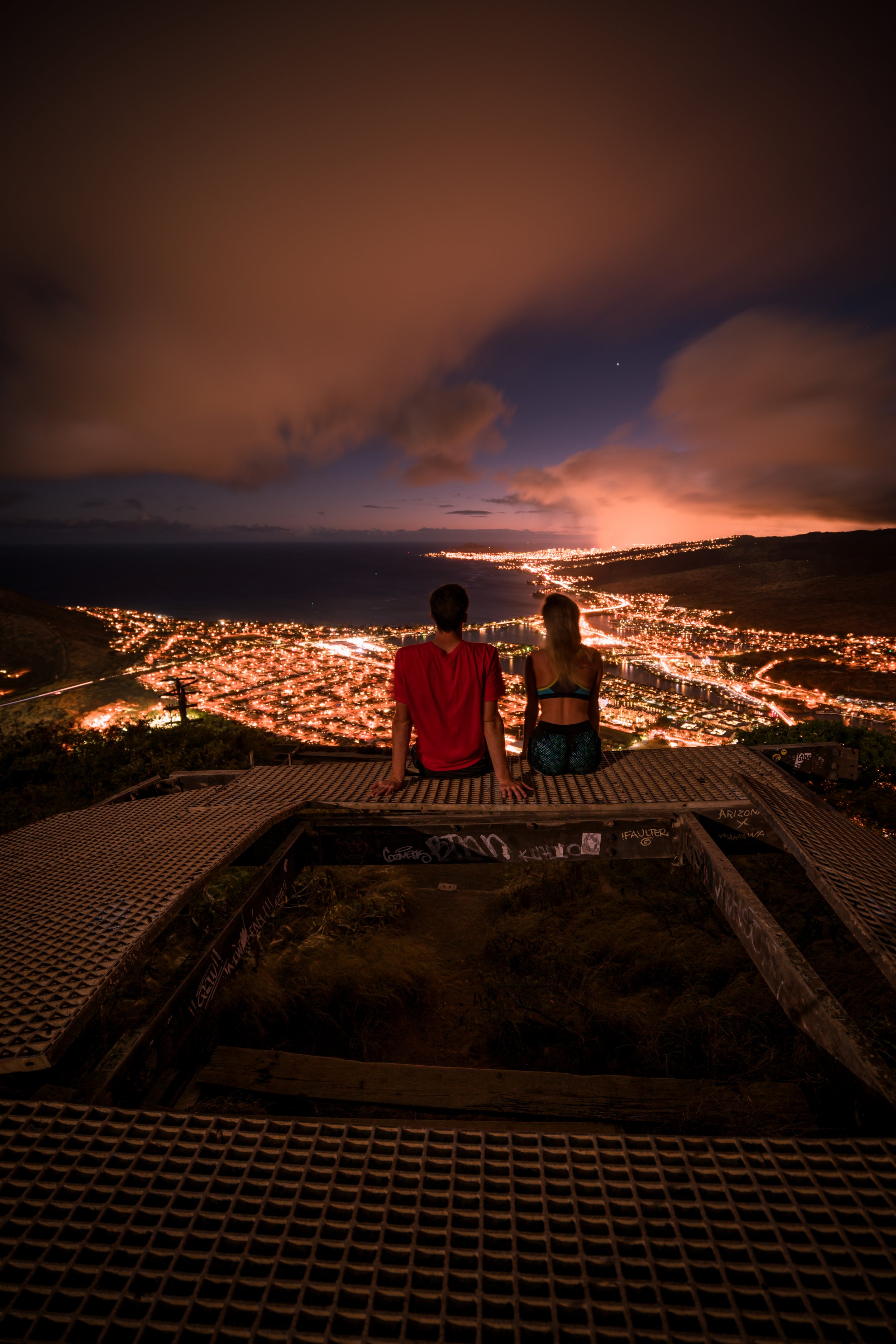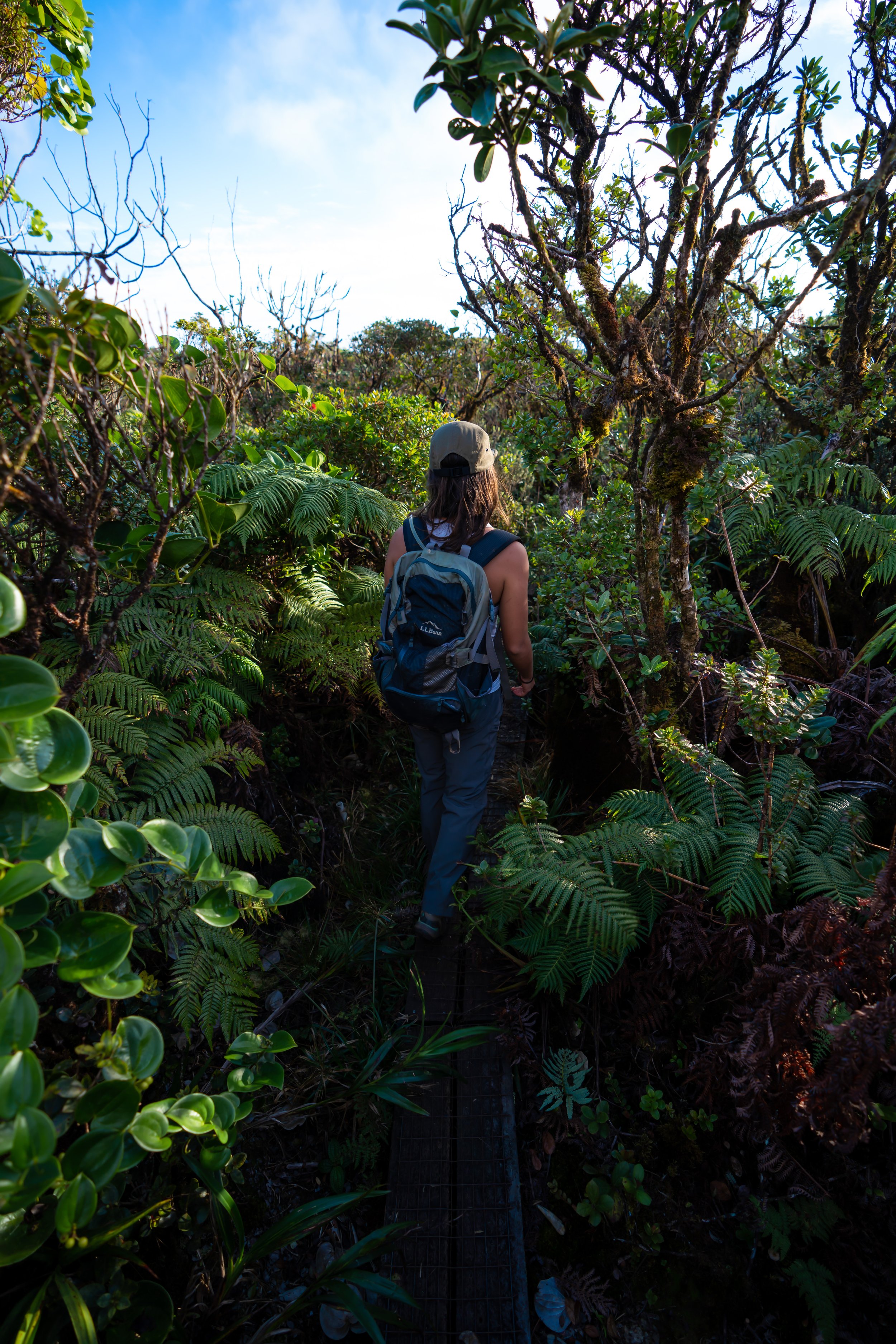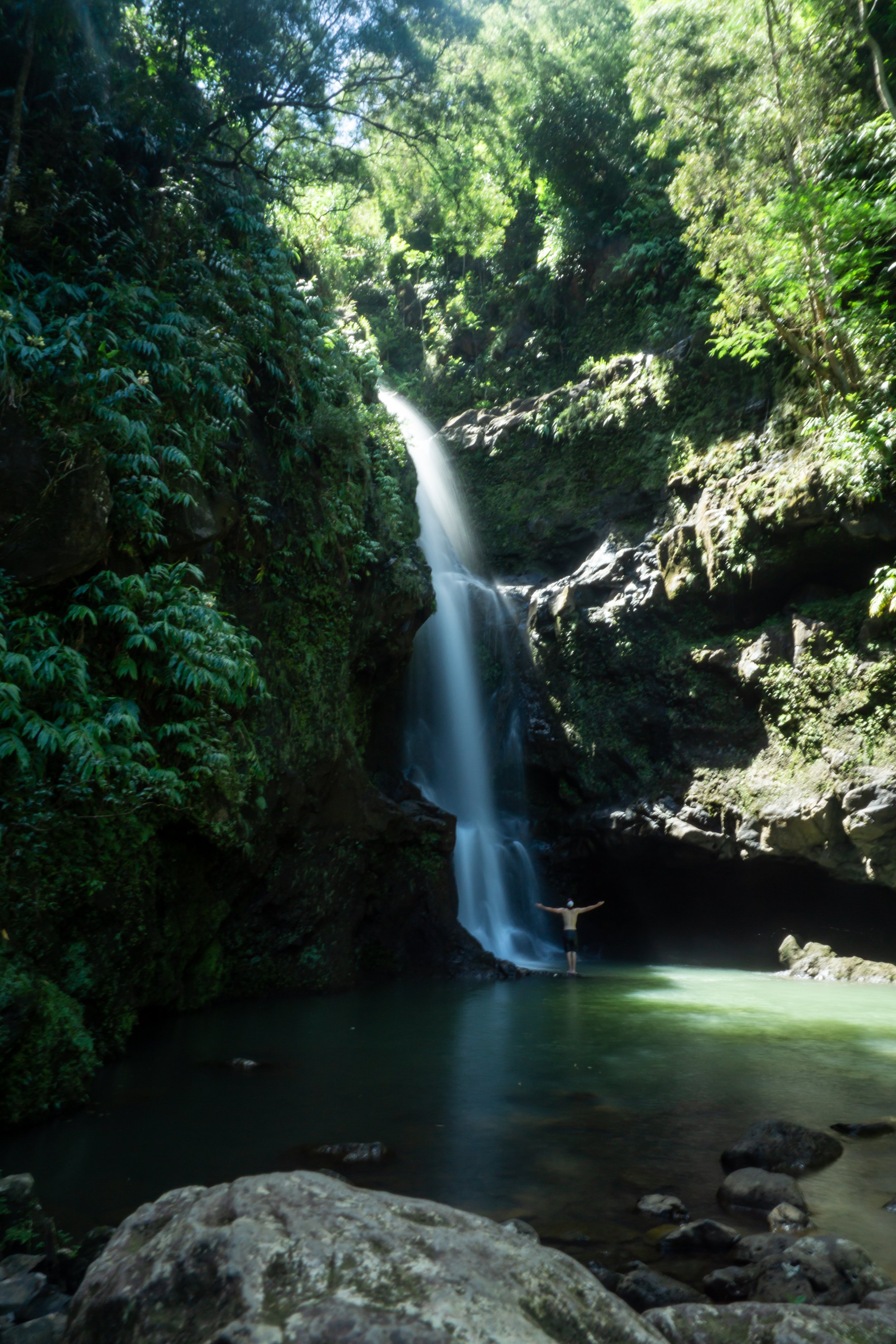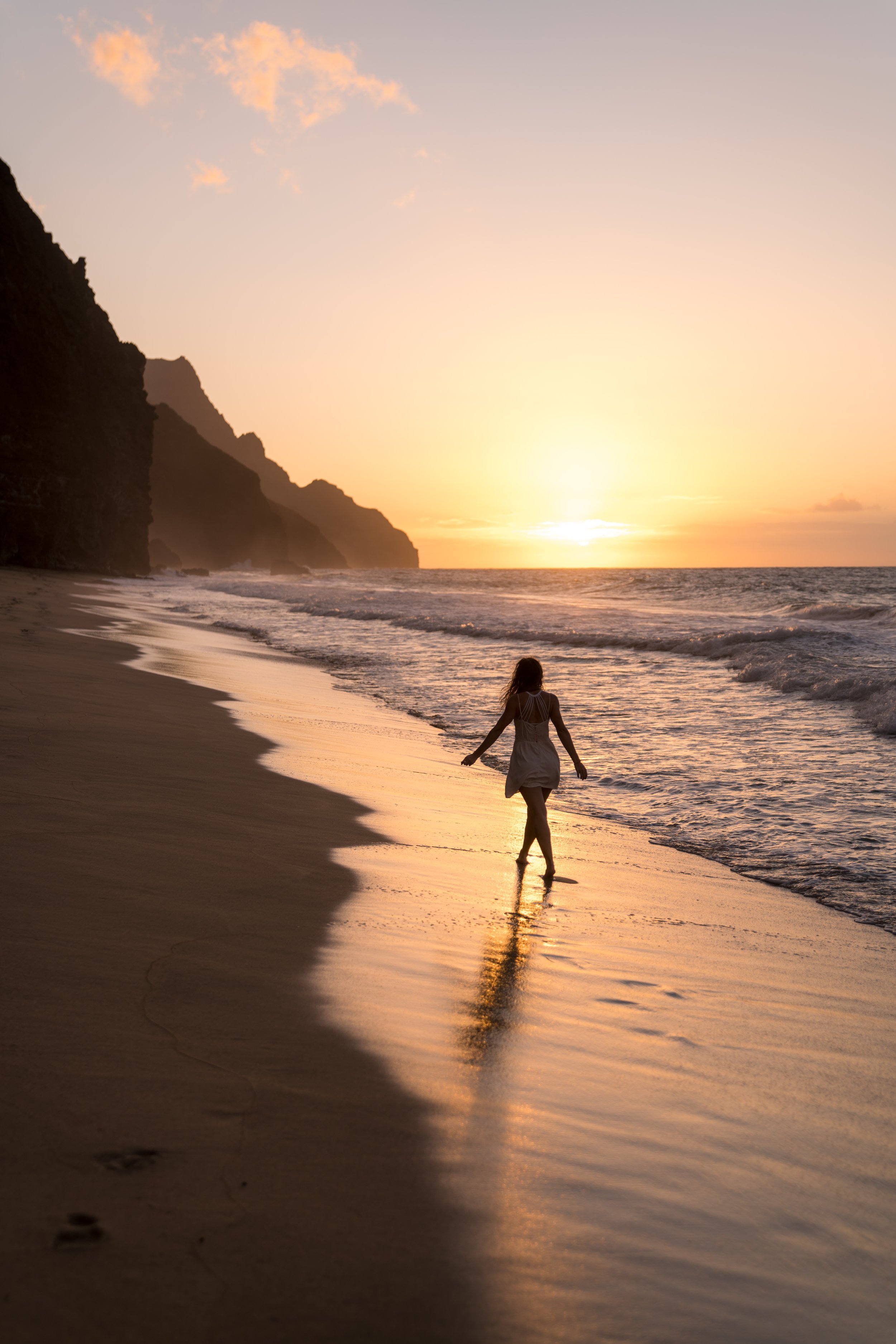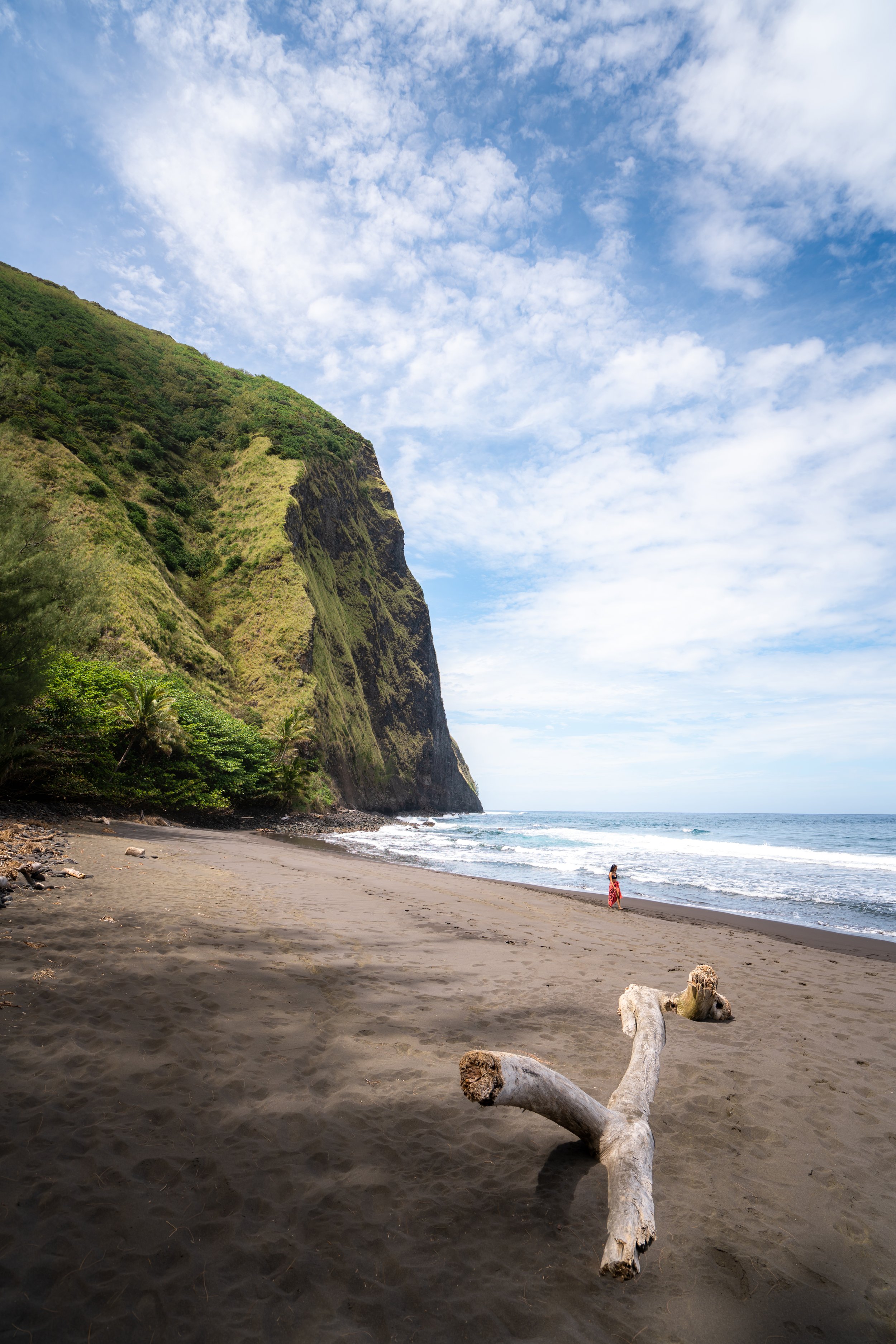Hiking the ʻAiea Loop Trail on Oʻahu, Hawaiʻi
Distance: 4.9 miles / 7.9 km
The ʻAiea Loop Trail in central Oʻahu is a visitor and local favorite for a number of reasons.
First, the ʻAiea Loop Trail is one of the best kid-friendly hikes on the island. I say this because the trail is well-trafficked; you can always turn back at any time; and after it has recently rained, the ʻAiea Loop Trail seems to dry out quicker than other Oʻahu hikes.
The second reason is that the ʻAiea Loop Trail is one of the best trail runs on Oʻahu, with relatively easy grades, great views, and a route that is easy to navigate.
All being said, the upper half of the loop is considered the easier half, but the lower half that parallels the H-3 freeway has many more beautiful views to enjoy. This is why I highly recommend completing the entire loop, regardless of which trail you choose to begin.
ʻAiea Loop Trailhead Parking
The ʻAiea Loop Trail is located within Keaʻīwa Heiau State Recreation Area.
That being said, parking for the ʻAiea Loop Trail can either be at the upper or lower trailhead, depending on which direction you decide to hike.
In either case, part of the full loop, whether at the beginning or end, will involve walking the road a short distance to get back to your car.
Google Maps Directions: ʻAiea Loop Trailhead
My Hawaiʻi Hiking Checklist
Osprey 3L Water Bladder - The Osprey 3L water bladder is the most universal hiking and backpacking water bladder on the market, and it’s my go-to because of the slide-off seal that allows it to be quickly filled from the top. Additionally, individual parts are easily replaceable, such as the bite valve.
Blister / Heel Protectors - I swear by these cheap, amazing heel protectors to prevent blisters for nearly every kind of hiking and backpacking that I do!
Black Diamond Headlamp - Personally, I recommend the Black Diamond Storm because it is one of the brightest, lightest, and longest-lasting headlamps on the market—and trust me, the weight-to-battery-life ratio really does matter!
Hiking / Trail Running Shoes - Depending on the type of trail, I prefer to use either the Keen Targhee for longer, more rugged hiking or the HOKA Zinal Trail-Running Shoe for lighter, less intense trails. In either case, both have been amazing to me for many years across countless environments, and both can be found in men’s and women’s sizes. - (Men’s Keen / Women’s Keen) (Men’s HOKA / Women’s HOKA)
Waterproof Rain Shell - You never know when it may rain, and I’ve learned over the years that a rain shell is far better than a rain jacket. By this, I mean that it’s best to have something that the water will roll right off of, which is why I recommend the Patagonia Torrentshell 3L available in both men’s and women’s sizes.
High SPF Sunscreen - Packing high-SPF sunscreen is a must for long days outside!
Hiking the ʻAiea Loop Trail
Typically speaking, I like to begin the ʻAiea Loop Trail on the upper half, which is the easier of the two trailheads to find because it’s located at the very top of ʻAiea Heights Drive.
ʻAiea Loop Upper Half
The upper half of the ʻAiea Loop Trail begins on a very gradually trail, and it will gain roughly 550 ft. (168 m) in about 1.6 miles (2.6 km) to the high point on the trail.
At no point is the elevation gain ever too feel steep, making ʻAiea Loop one of the best Oʻahu trails for young kids, people of all ages, and trail runners.
ʻAiea-Kalauao Falls Loop Junction
At about the 0.4-mile (0.6 km) mark, you may notice a trail branching off the ʻAiea Loop.
This is the split for Kalauao Falls, but if you weren’t planning on hiking the Kalauao Falls Trail, don’t leave the ʻAiea Loop, as Kalauao is a much more challenging and confusing hike than the ʻAiea Loop Trail.
Read My Separate Post: Kalauao Falls Loop Trail
This bench is one of the best viewpoints on the upper half of the ʻAiea Loop Trail.
ʻAiea Ridge-Upper Kalauao Falls Loop Junction
When you reach this junction on the trail at about 1.6 miles (2.6 km), you’ve reached the uppermost part and the start of the lower half.
This is the junction for the ʻAiea Ridge Trail that leads up to the Koʻolau Summit and the infamous Stairway to Hell. Additionally, this junction is also where the Kalauao Falls Loop meets back up with the ʻAiea Loop from the earlier split.
I think it’s important to know that hiking any part of ʻAiea Ridge should be done with more careful planning/ preparation than the ʻAiea Loop Trail, and ʻAiea Ridge is not a kid-friendly hike.
There are good views if you choose walk up to the start of the ridge, but I personally think that the views get better once you proceed down the lower half of the ʻAiea Loop.
Read My Separate Posts: ʻAiea Ridge Trail (Stairway to Hell) / Kalauao Falls Loop
ʻAiea Loop Lower Half
Once past the ʻAiea Ridge junction, you have officially begun the lower half of ʻAiea Loop, which is roughly 3.3 miles (5.3 km) in total.
As you can clearly see from the differences in distance, both 'halves' of ʻAiea Loop aren’t really halves. The lower half is clearly longer, but breaking them up where ʻAiea Loop meets ʻAiea Ridge makes the most sense because at this point, most of the remaining distance is downhill, with the exception of the last 0.7 miles (1.1 km).
That being said, the lower half of the ʻAiea Loop is arguably the harder half because it descends lower than the upper half to cross the ʻAiea Stream and then climbs back up a number of switchbacks to get back to the state park.
However, in reality, it’s not much more difficult than the upper half, and the lower half is where the best views on the trail are located!
This is my favorite viewpoint on the ʻAiea Loop Trail.
Stay to the right on the more defined trail.
The path heading up the ridge is a small side trail that meets back up with the ʻAiea Loop a little further down the hike.
In my opinion, the views aren’t better than the viewpoints in the photos above, but it can make for a nice alternate route if you’ve hiked the ʻAiea Loop before.
Toward the end of the lower half, you can start to see the state park across the valley.
The trail to the left leads out to an alternate trailhead at the top of Hālawa Heights Road.
ʻAiea Stream
Depending on how much rain the area has gotten, the ʻAiea Stream crossing may be significantly muddier than what’s shown in the photo below.
On the far side of ʻAiea Stream, there is only a few switchbacks to climb back out of before reaching the lower ʻAiea Loop Trailhead.
Lower ʻAiea Loop Trailhead
Once back in the Keaʻīwa Heiau State Recreation Area, turn right to take the fastest route back up to the upper ʻAiea Loop Trailhead.
Native Plants on the ʻAiea Loop Trail
Since the ʻAiea Loop Trail is relatively a low-elevation trail, most of the plants you will hike by are non-native/ invasive species. It isn’t until the Koʻolau Mountains gain elevation up ʻAiea Ridge that native plants really start to dominate.
However, there are number of native plants that can be found by on the loop trail, including ʻŌhiʻa lehua, Alaheʻe, ʻIliahi, Neleau, Uluhe, Kupukupu, and Koa, to name a few.
If you’d like to learn more about these and tons of other native Hawaiian plants from across the islands, I encourage you to check out my separate post linked below.
Read My Separate Post: Native Hawaiian Plant Guide
More Oʻahu Adventures
If you’re interested in reading about some more amazing Oʻahu adventures, check out my separate posts below!
Best Hotels & Restaurants in Waikīkī
If you’re trying to decided where to stay on Oʻahu, check out my top 10 list for the best resorts and restaurants in Waikīkī.
I break down what makes one hotel a better choice over another, so that you can find the best fit for your stay on the island.
Read My Separate Post: Best Waikīkī Hotels & Restaurants
HNL Airport-Hotel Shuttle
Prices on ride-share apps like Uber/ Lyft cannot beat the price of booking your hotel shuttle prior to arrival. I say this because there are additional fees for ride-share airport pick-ups at Honolulu Airport (HNL), which is why I recommend booking your transportation in advance using the options below.
Additionally, the last option below will go as far as the Ko ʻOlina Resorts on the West Side and Turtle Bay on Oʻahu’s North Shore!
Best Way to Book Rental Cars!
I travel quite a bit, and I know firsthand that finding a good rental car deal can be a challenge, but that’s why I recommend comparing all of your options with Discover Cars.
In short, Discover Cars is a well-known, reputable business that allows you to search for the best deal across companies, and they have the best full-refund cancellation policy I’ve ever seen, valid up to 72, or sometimes even 48, hours prior to your reservation!
Book Here: Discover Cars
Visiting Other Islands
If you are visiting Oʻahu or heading to another island, check out some of my personal recommendations for Oʻahu, Maui, Kauaʻi, Molokai, Lānaʻi, and Hawaiʻi Island (Big Island) in these separate posts.
If you’re trying to decide which island is right for your visit, check out my overview about each island in the post below.
Read My Separate Post: What is the Best Hawaiian Island to Visit?
What is the Best Time of Year to Visit Hawaiʻi?
The weather in Hawaiʻi can often appear to be warm and beautiful throughout the year, but in my experience, there is a lot more to consider when planning what time of year to visit the islands, such as what island you are considering, what sides of each island do you plan to stay, what activities are you most interested in, the wildlife, and countless other nuanced variables that can all impact the type of trip you can expect to have.
For these reasons, I highly recommend reading through my separate article to not only understand my thoughts regarding the best time of year to come to Hawaiʻi but also what you need to consider based on the time of year that you plan to visit.
Read My Separate Post: What is the Best Time of Year to Visit Hawaiʻi?
10 Best Tours & Excursions on Oʻahu
There are a lot of different tour options to choose from on Oʻahu, but to make it easier to decide, I made a list of my favorite tours because some things simply are better with a local guide!
Read My Separate Post: Best Tours on Oʻahu
Safety
All hikes in Hawaiʻi should not be compared to trails outside of the islands, and hikers should exercise due caution on every adventure, given that many are extremely dangerous.
By this, I mean that Hawaiʻi is known for hot, humid weather, steep, dramatic, and unstable cliffs, and flash floods, which can occur without warning. Therefore, it is important that you check the local forecast, understand the physical condition of your entire group, and pack sufficient food and water before attempting any adventure.
Disclaimer
All information provided on this blog is for informational purposes only and is not intended to be a substitute for information or advice from qualified professionals or managing agencies.
Noah Lang Photography LLC makes no representations or warranties regarding the accuracy or completeness of the information provided here, and readers should use their own discretion, judgement, and seek professional advice where it is appropriate.
Furthermore, Noah Lang Photography LLC shall not be held responsible for any injuries, lost individuals, or legal issues arising from the use of information provided on this website, and if applicable, the above safety disclaimer should be referenced to provide a generic overview of the risks involved.
All said, the content on this blog is for the sole use of Noah Lang Photography LLC, and unauthorized use or reproduction of this content is strictly prohibited.
Disclosure
This post is not sponsored.
However, some of the links in this post are affiliate links, which means that I may earn a small commission if a purchase is made through one of those links. This commission comes at no additional cost to you, and I only recommend products that I personally use and believe will add value to my readers. Thank you for your support, which enables me to continue creating more!
To read the full privacy policy, click here.

About This Blog
Noah Lang Photography, also known as @noahawaii, is 100% reader-supported!
I do not accept guest articles or sponsored content of any kind on my blog, which is why, if you enjoy the outdoor and travel content I create, please consider buying me a coffee!
I appreciate your support, which helps me continue to keep this blog alive!










